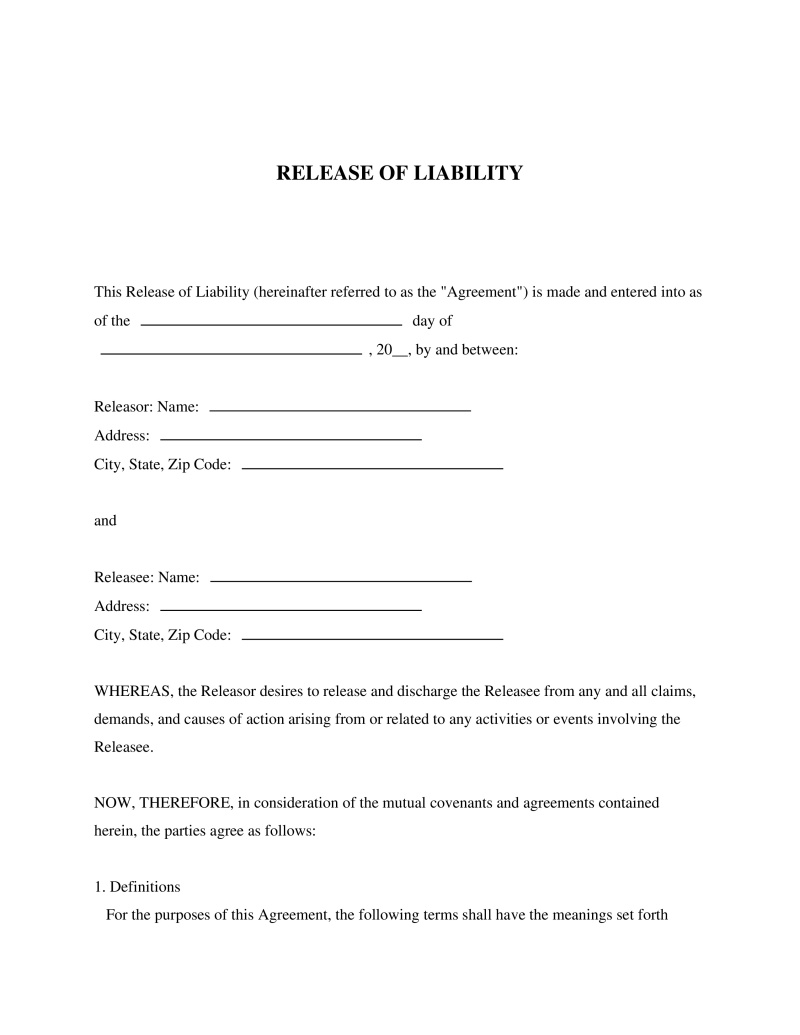A Release of Liability is a legal document that allows individuals or businesses to waive potential legal claims, providing protection and clarity in situations like events, activities, or business operations across all U.S. states.
Full Name
Please provide your legal full name.

Table of Contents
What is a Release of Liability?
A Release of Liability is a legal document that absolves one party from legal responsibility for any accidents or damages that may occur after a transaction, typically involving the sale of an item or service. This document is most commonly utilized in the context of selling vehicles, where it can protect the seller from being held liable for any mishaps that occur once the vehicle has been transferred to the new owner. Therefore, anyone involved in selling or transferring ownership of personal property, such as a car, should consider executing this document. It serves not only to safeguard the interests of the seller but also to ensure clarity and peace of mind for both parties involved in the transaction.
Key Features
Important Provisions
- Identification of Parties: Clearly specifies who is releasing liability and who is being protected from future claims.
- Description of Transaction: Details about what is being transferred or sold, including make, model, and any identifying numbers or features.
- Release Clause: Explicitly states that the releasor agrees not to hold the releasee responsible for any future liabilities related to the item's use or ownership.
- Governing Law: Specifies which state's laws will govern the interpretation and enforcement of the agreement.
- Signature Section: Provides spaces for all relevant parties, including witnesses and/or a notary public, to sign.
Pros and Cons
Pros
- +Minimizes legal risk for sellers by officially documenting the transfer of risk and responsibility.
- +Helps expedite the car title transfer process by providing essential legal documentation.
- +Increases buyer confidence through transparent disclosure of condition and ownership status at time of sale.
- +Reduces potential for post-sale disputes by clearly outlining terms accepted by both parties.
- +Serves as an official record that can be useful for tax and registration purposes.
Cons
- -May require additional steps such as notarization, depending on jurisdictional requirements.
- -Could potentially omit necessary provisions if not tailored to specific state laws or transaction details.
- -Does not substitute for comprehensive insurance or negate the need for thorough due diligence by the buyer.
Common Uses
- Selling a used car or motor vehicle where a DMV release of liability is required.
- Transferring ownership of personal property like boats, motorcycles, or bicycles.
- Completing transactions involving high-value items where future liability could be a concern.
- Facilitating equipment sales between businesses, ensuring both parties are clear on post-sale responsibilities.
- Settling property claims where one party agrees not to hold the other liable post-settlement.
- Used in event participation agreements to protect organizers from liability claims.
Frequently Asked Questions
Do you have a question about a Release of Liability?
Example questions:
Not the form you're looking for?
Try our legal document generator to create a custom document
Community Discussion
Share your experience and help others
Legal Notice: Comments are personal opinions and do not constitute legal advice. Always consult a qualified attorney for matters specific to your situation.
Comments (0)
Leave a Comment
No comments yet. Be the first to comment!